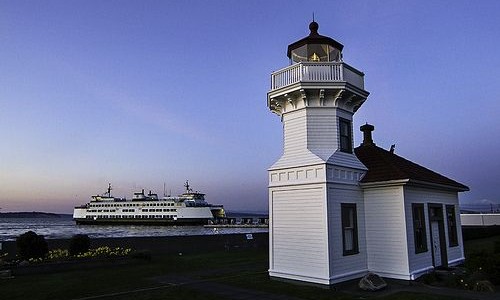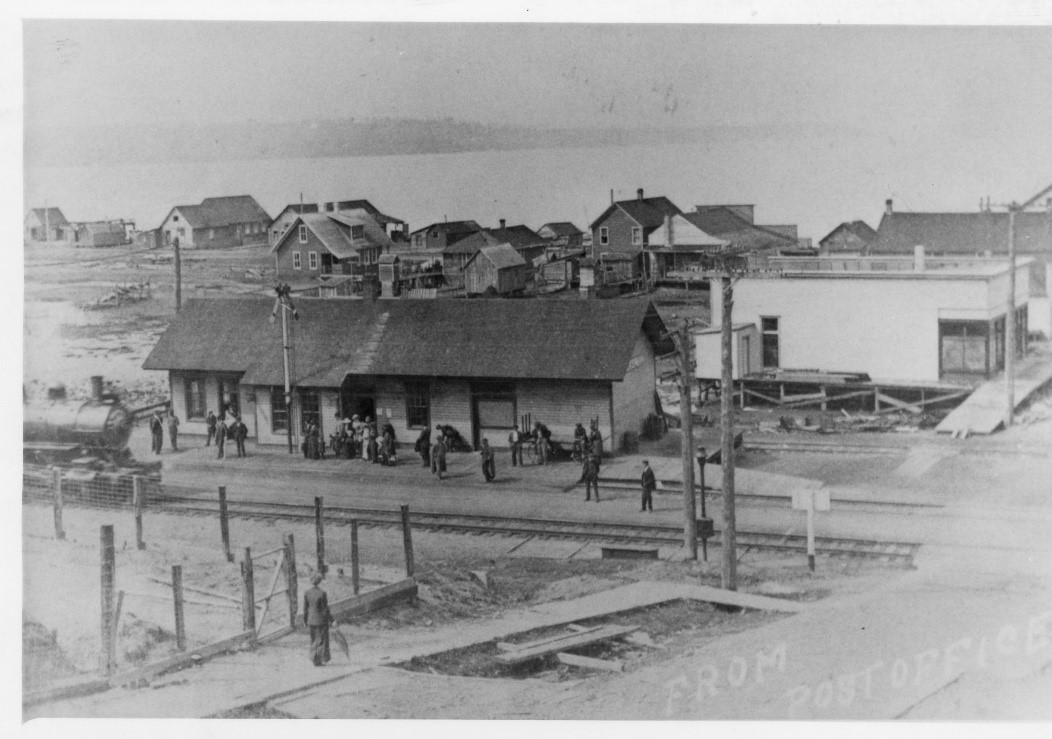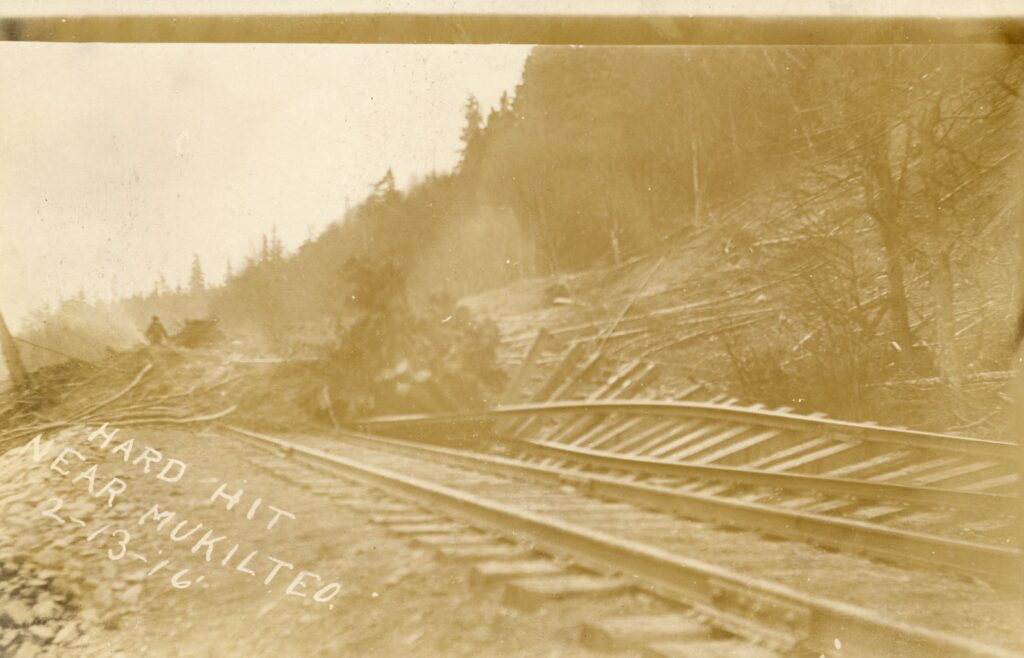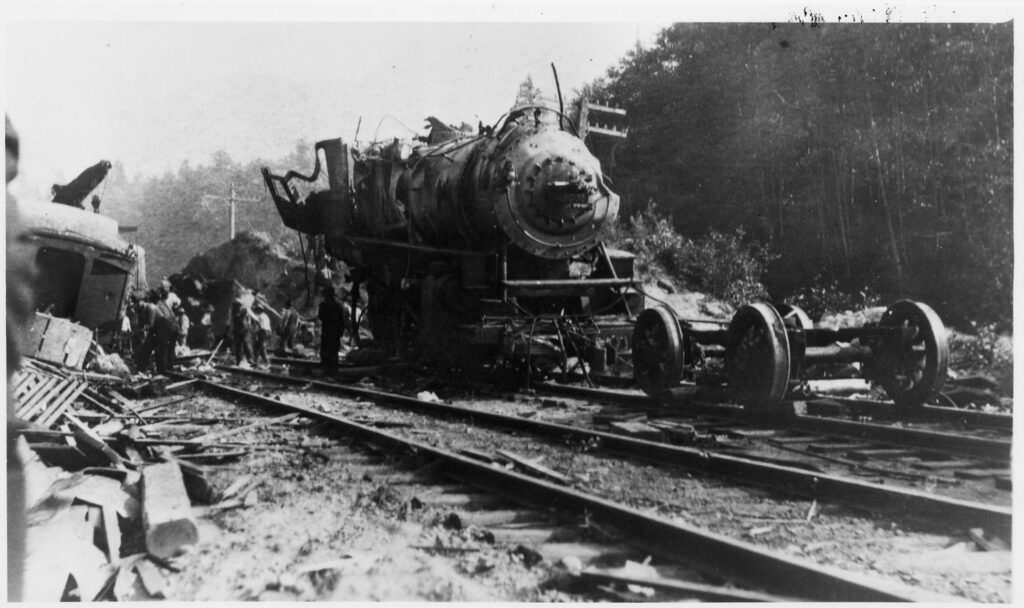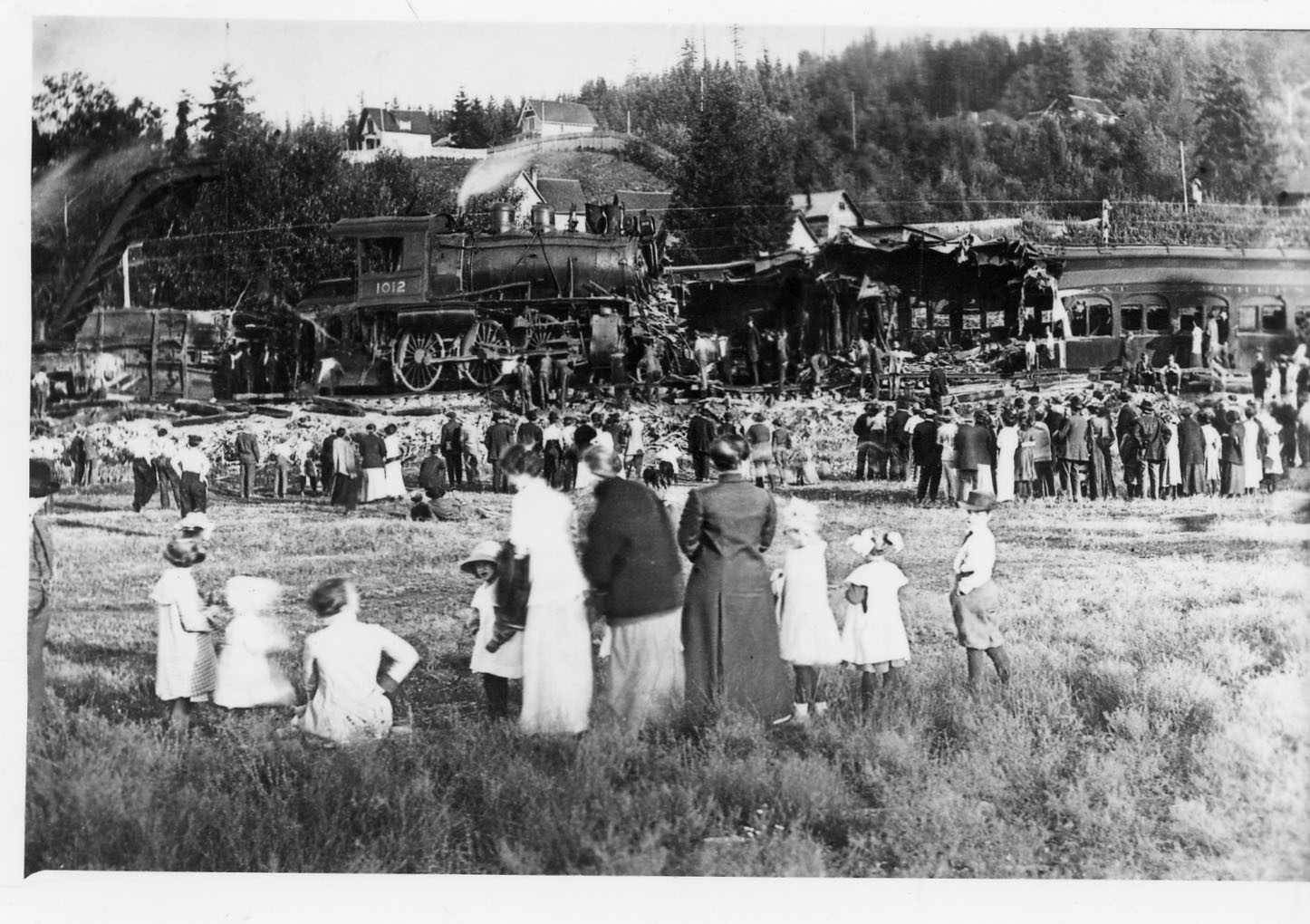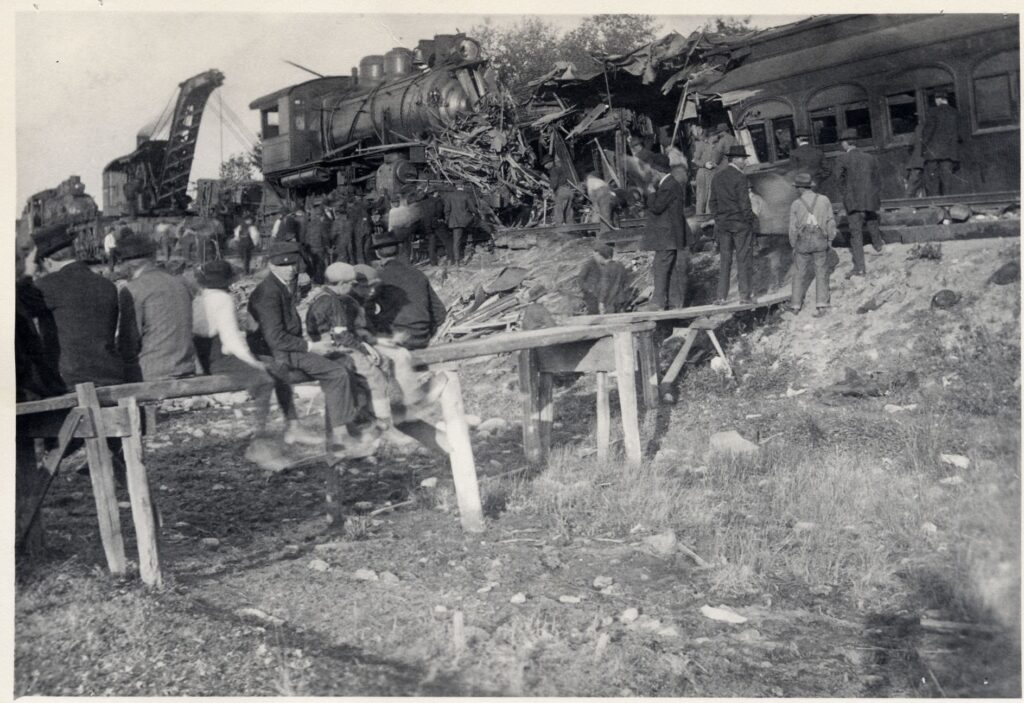By Peter Anderson, Director, Mukilteo Historical Society
Completion of the Great Northern Railway in 1893 provided our Puget Sound region with an important transportation link to Minneapolis – St. Paul and other cities further east. Built over the Cascade Mountains via Stevens Pass, the railway sparked an economic boom that opened our markets for fish, lumber and other products to eastern cities, and brought settlers to the Pacific Northwest.
By the early 1900’s, trains began to rumble through Mukilteo bringing mail and other goods to the townspeople. Initially there was only one train per day travelling on a single track. The depot, located on First Street near Park Avenue, became an important gathering place.
Excitement over the arrival of a scheduled train stopping at Mukilteo was sometimes heightened by train mishaps occurring here or nearby. The tracks between Everett and Seattle were built along the shoreline to avoid the high cost of constructing bridges that otherwise would have to span the many gulches along the route. This made the track beds prone to tidal erosion on the water side and earth slides from high bluffs on the land side.
About 1911, a second railroad track was built at Mukilteo. When a train went over the new track, the engine and box car tipped over where the footing was too soft to support them. The engine came completely off the track and ended up on its side.

A rock seawall was built to strengthen the footing and protect the railroad from tidal erosion. To build the seawall, flat cars dumped huge granite boulders with a crane and a crew of men helped lay them in place. Gondola cars then came with sand, gravel and rocks to fill the bed between the wall and railroad track.
In 1916, a huge earth slide tore up and covered railroad tracks near Mukilteo. In 1948, another large slide pushed a Seattle-bound mail train off its tracks. The locomotive careened over a ten-foot seawall and landed on its side in the water. Tons of earth slid down the embankment, burying the double tracks to a depth of almost 15-feet.
Our area has had its share of train wrecks due to other causes since the early 1900’s. On the morning of February 10, 1909, Mukilteo townsfolks were startled by an explosion that shook their buildings. They soon learned that the boiler of the engine pulling the southbound Owl train had exploded about a half-mile south of town. The engine was completely demolished, and the engineer and fireman were killed. Box cars were derailed.
On September 22, 1913, nearly the whole town came out to see the spectacle of a Great Northern train wreck near the Mukilteo train depot. There had been a collision between a locomotive and a passenger train.
Other train mishaps have included livestock that wandered on the tracks. In 1917, Mukilteo resident Frank Pokswinski filed a claim against Great Northern Railroad after one of their trains killed his cow. The GN legal department responded with a letter to Pokswinski saying he was negligent in allowing his stock to run freely where they were apt to get onto the railroad right of way. However, GN wanted to be fair and so offered to “split the difference” with Pokswinski by giving him an allowance of $60.00 to settle his claim. Although we have found no further record, we presume Pokswinski accepted GN’s settlement offer.
There have been many more mishaps caused by slides, or fear of slides, that have interrupted train service in our area over the years. Although some improvements in retaining walls have helped, the possibility of earth slides during periods of heavy rains continue to be of concern to this day. A November 1956 article in the Everett Daily Herald reported that bulldozers were working to move huge granite boulders into position for a new seawall that would enable train tracks to be moved away from a slide-prone bank just south of Mukilteo.
Due to several mergers and acquisitions, the name “Great Northern” has been replaced by “BNSF” (for Burlington Northern and Sante Fe) on freight trains traveling through our area. The same tracks are also used by Amtrak and Sound Transit’s “Sounder” train, which provides passenger service for commuters to and from Seattle. Service can still be frequently disrupted or canceled during the autumn and winter seasons due to landslides from unstable slopes above the tracks. During the 2012-2013 winter season, a record of 206 passenger trains between Everett and Seattle were canceled, prompting WASHDOT to begin a three-year landslide mitigation project to stabilize slopes above the railroad between Seattle and Everett.
Originally published in the 12/2/2020 issue of the Mukilteo Beacon.
